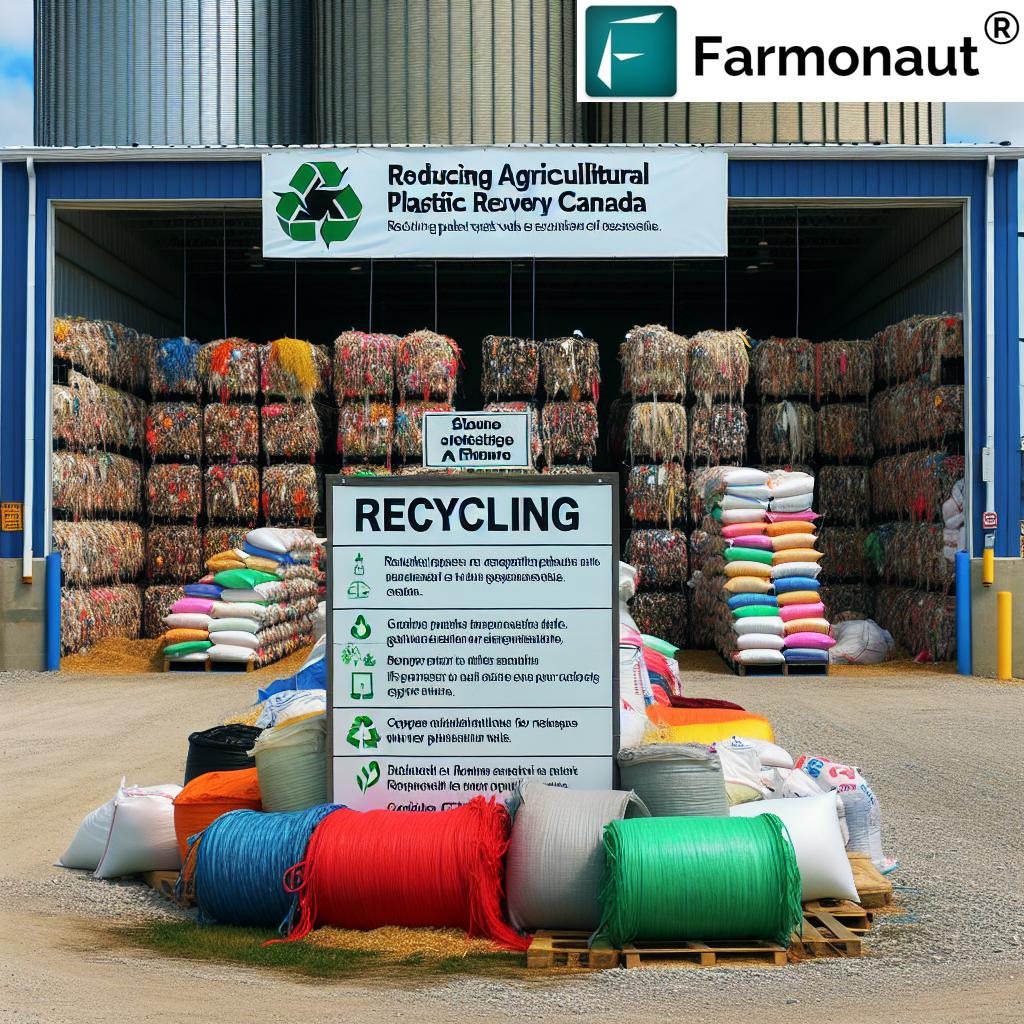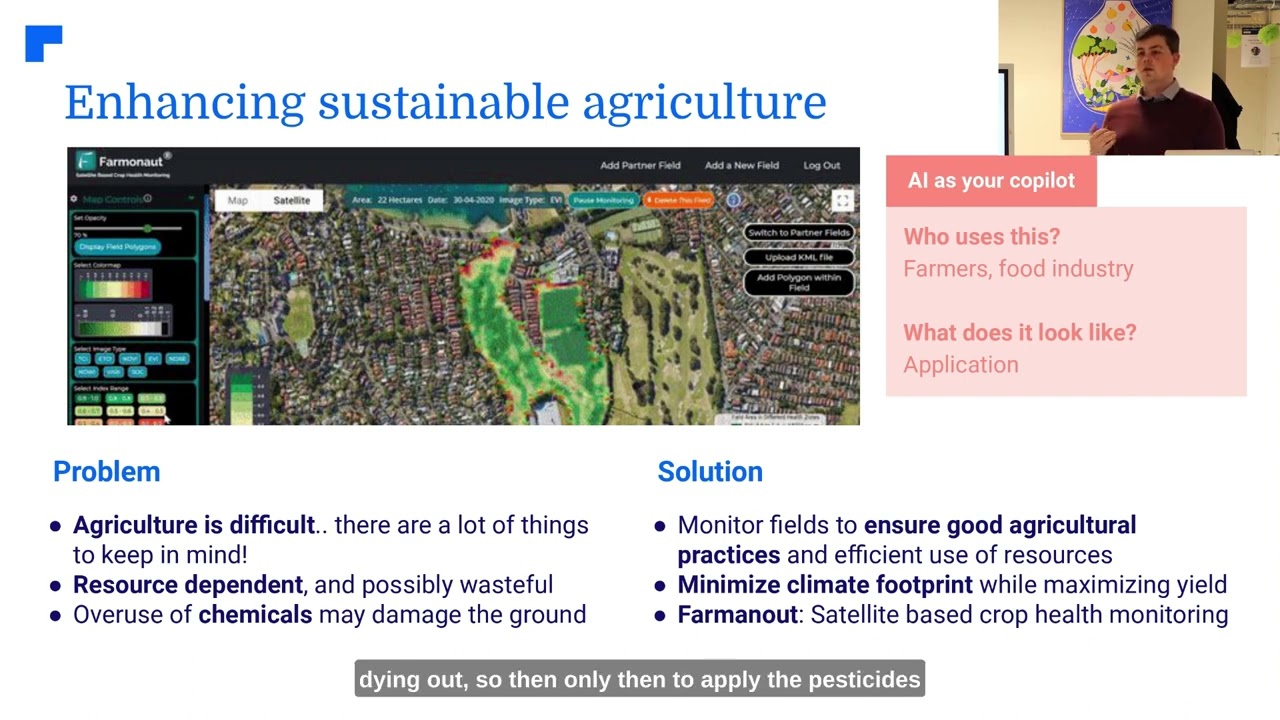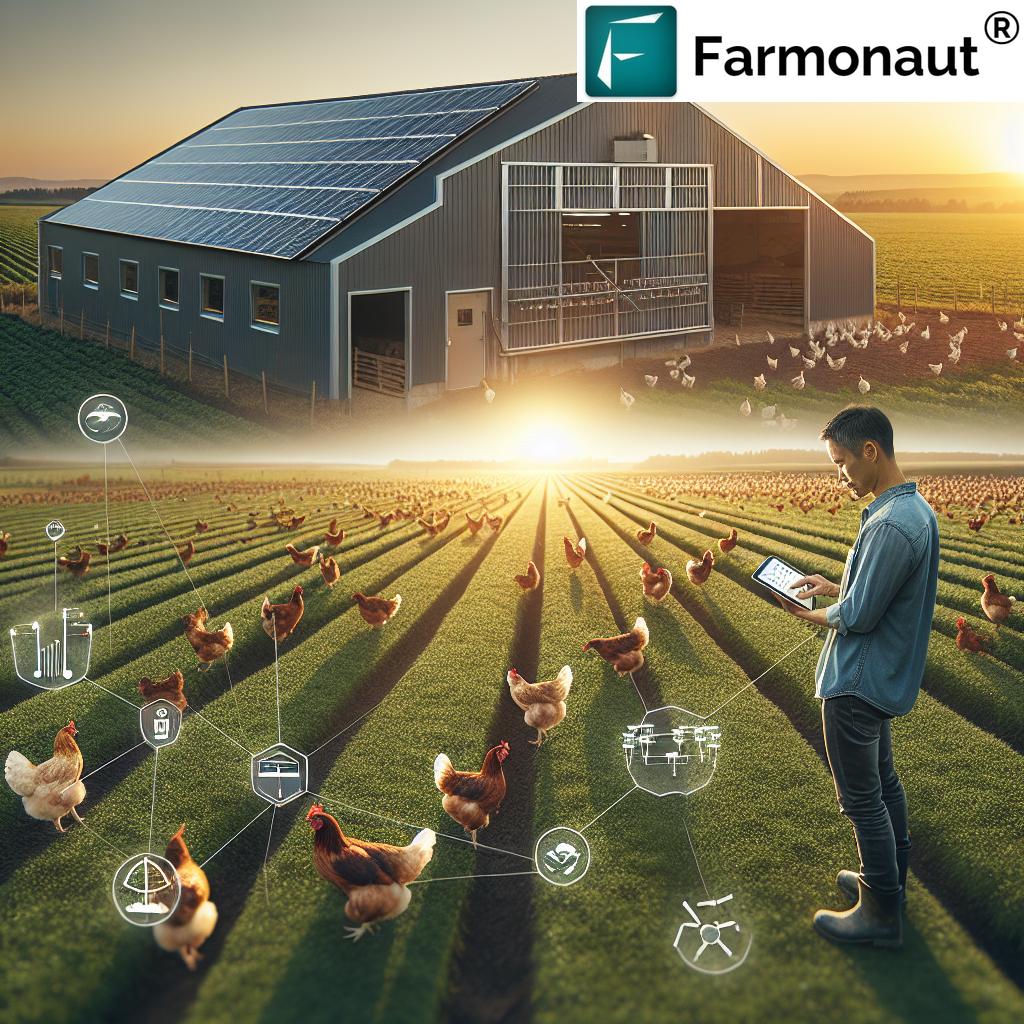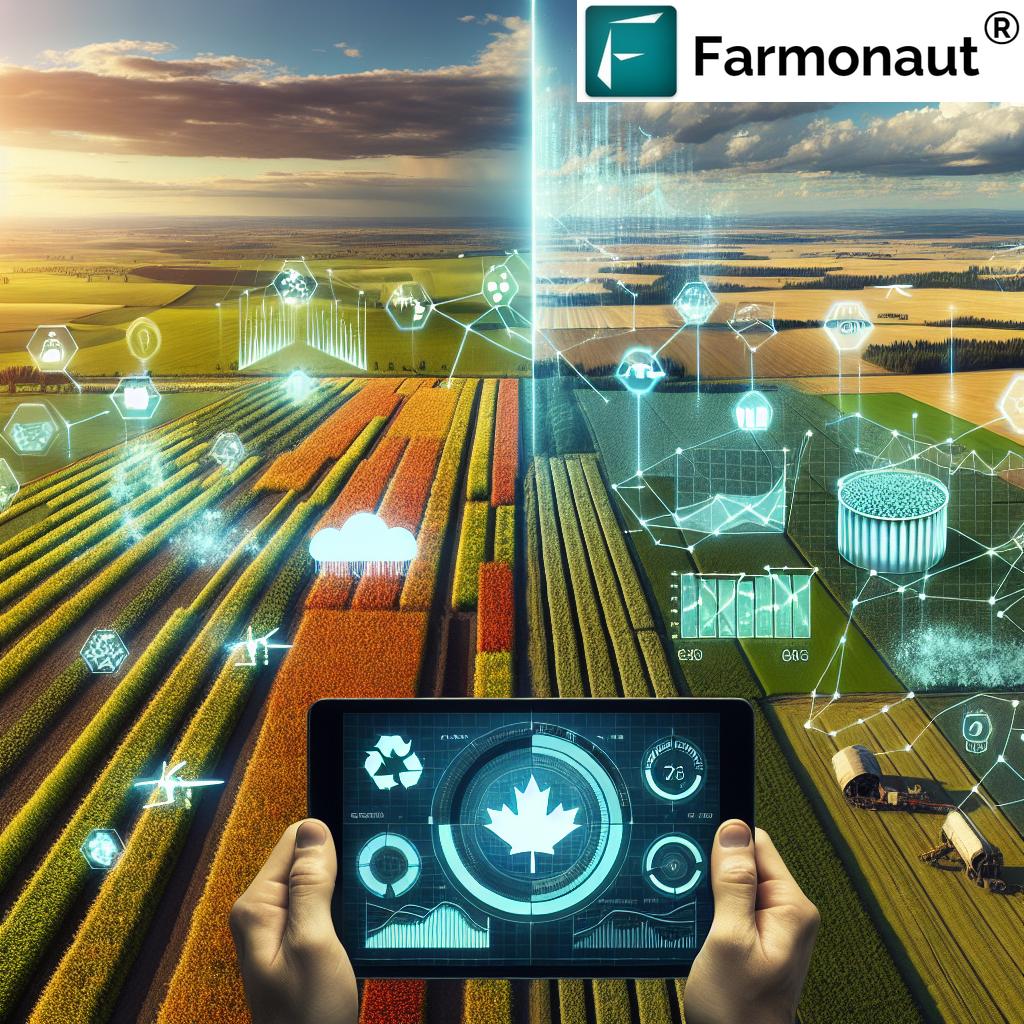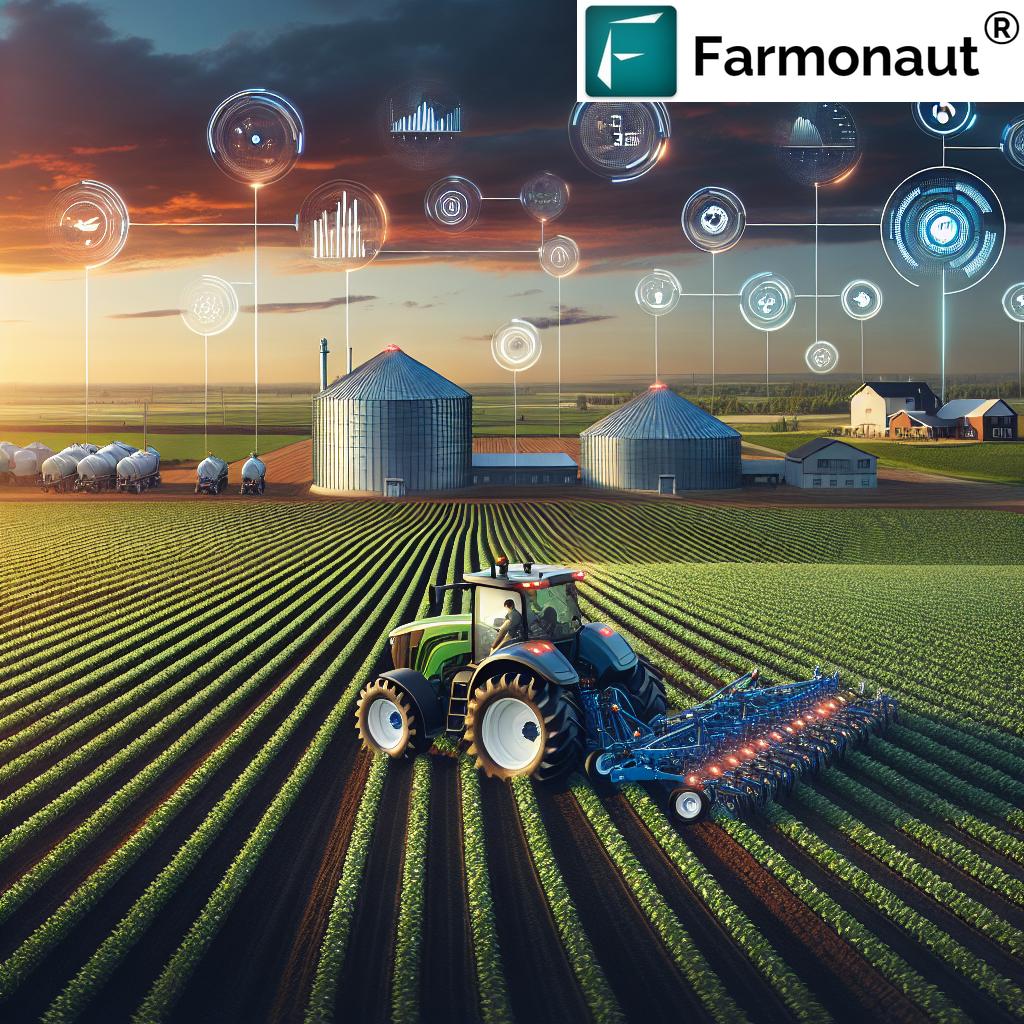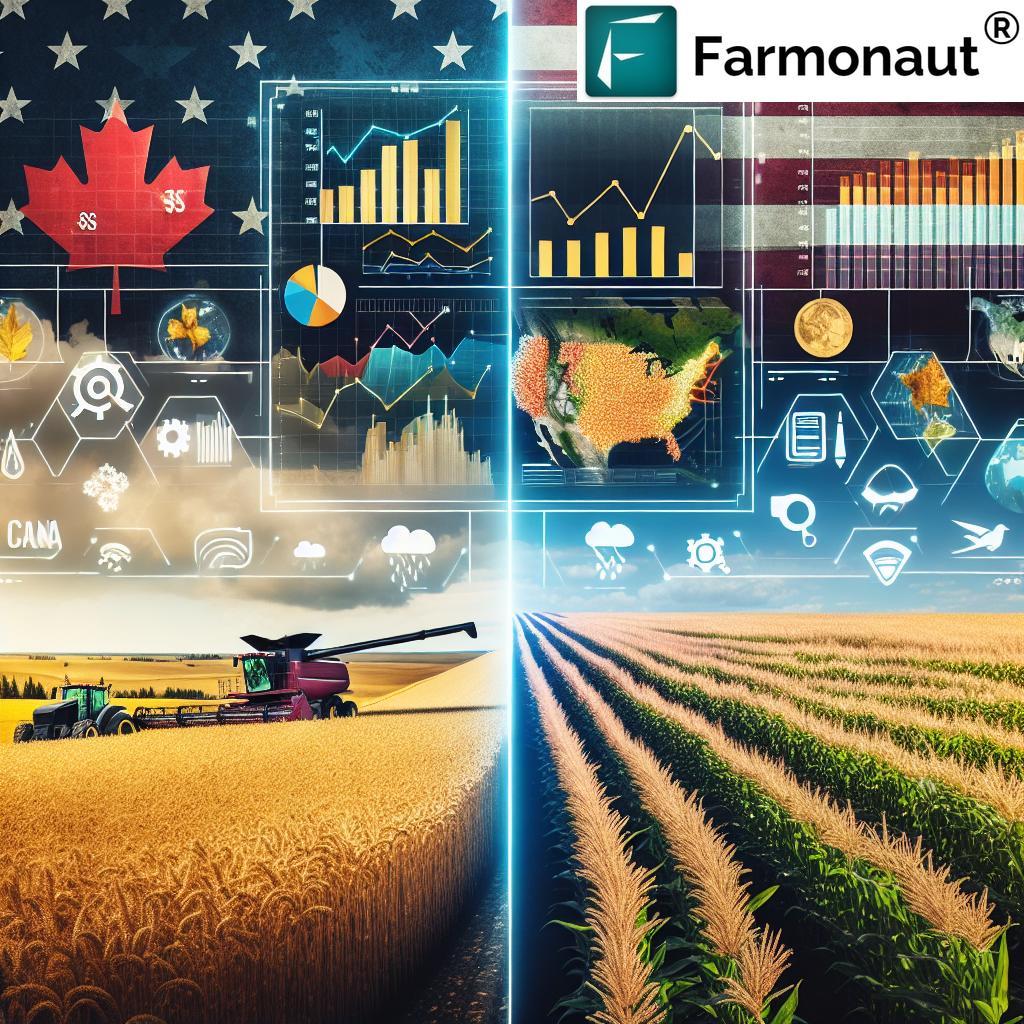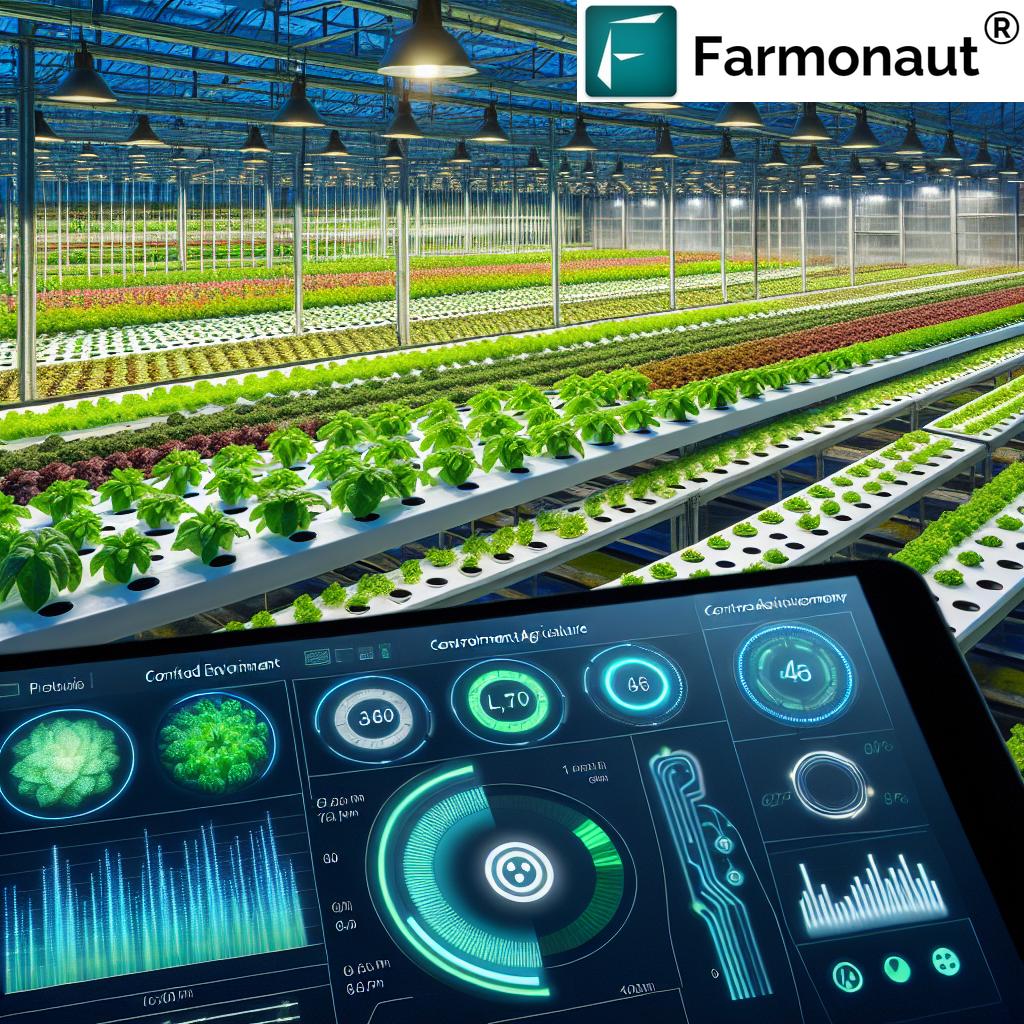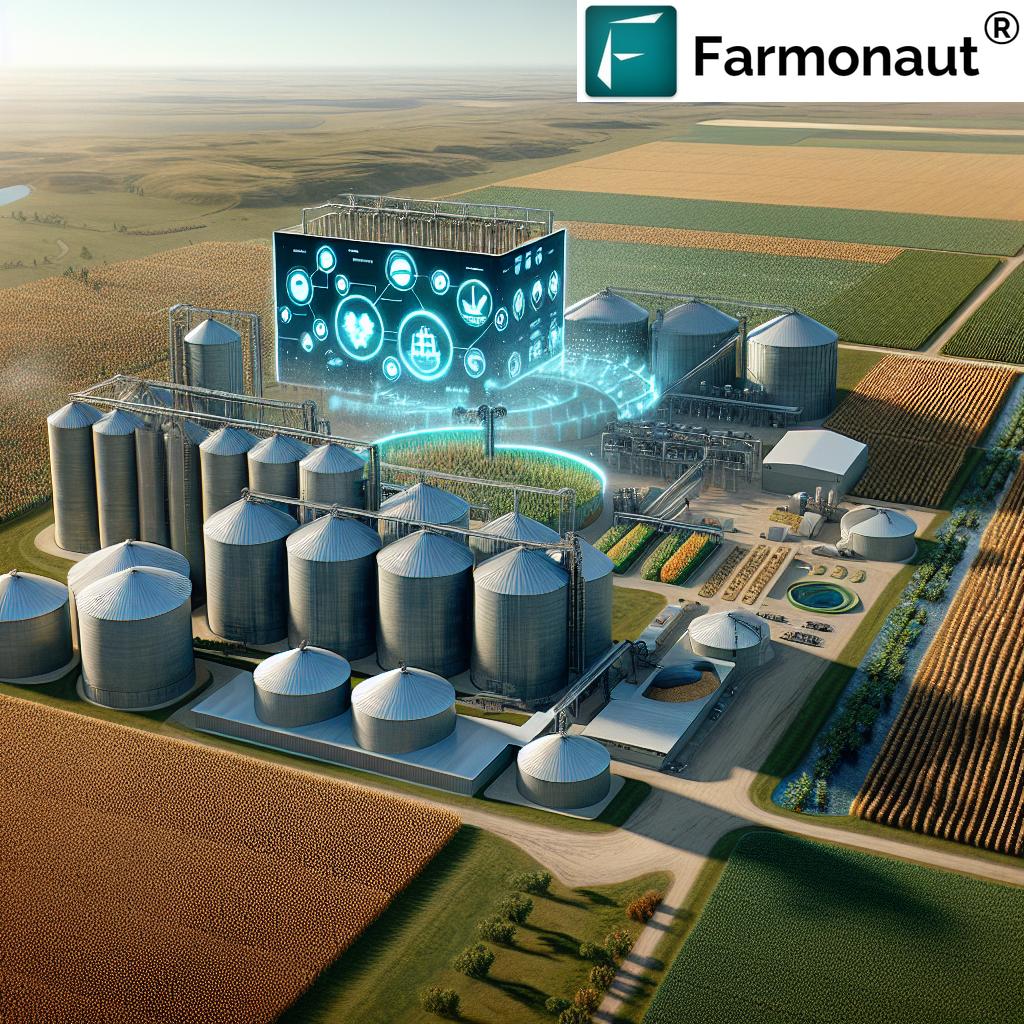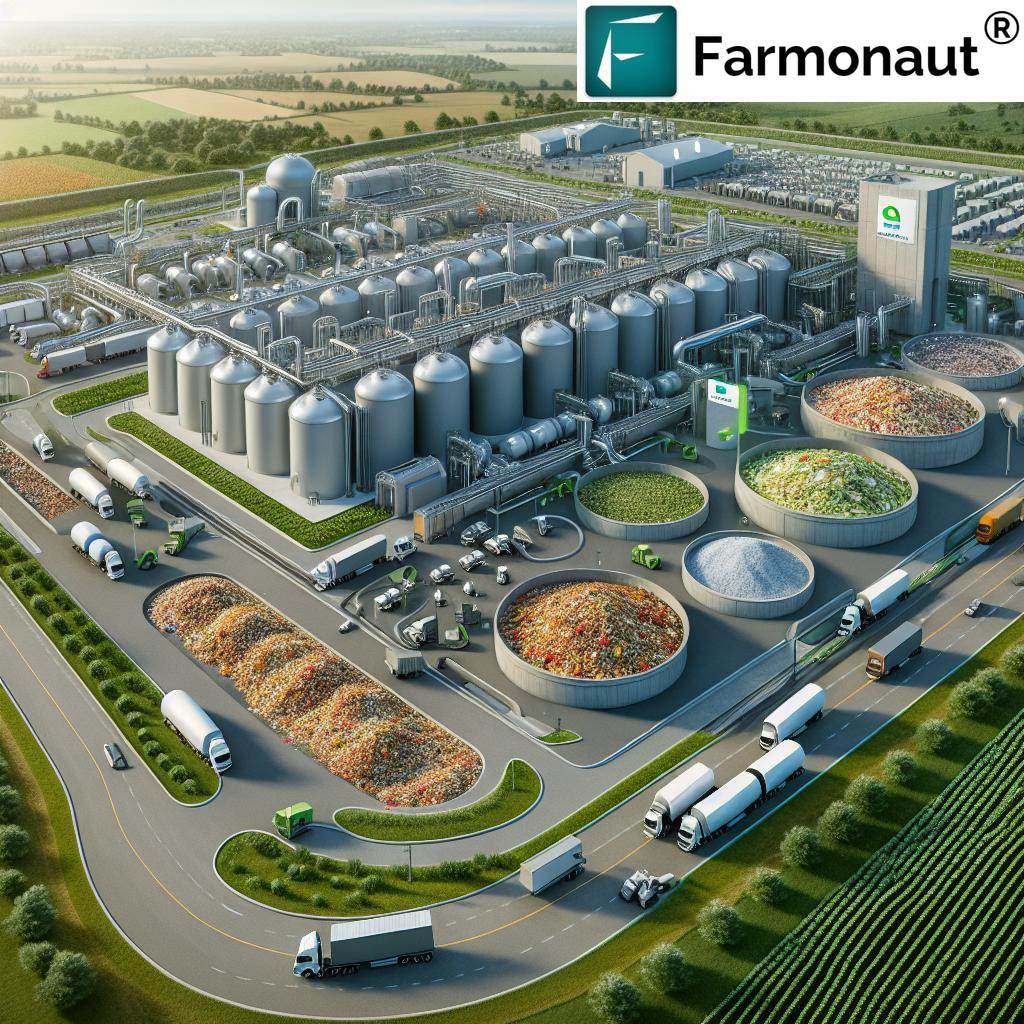Ontario Farm Plastic Recycling: 2.2 Million Kg Recycled This Earth Day
“Ontario farmers recycled 2.2 million kg of farm plastics this Earth Day, setting a new sustainability benchmark.”
- Introduction: Marking an Earth Day Milestone
- Why Farm Plastic Recycling Matters in Ontario
- How Canadian Farmers Lead Environmental Stewardship
- Agricultural Recycling Programs: Ontario’s Systems & Impact
- Ontario Farm Plastic Recycling: Yearly Impact Table
- How Cleanfarms Drives Responsible Farm Waste Management
- Farmonaut: A Tech-Driven Approach to Sustainable Farming
- Championing a Circular Economy in Canadian Agriculture
- On-Farm Action: Recycling Pesticide & Fertilizer Containers
- Growing Community Participation: Site & Program Expansion
- Leveraging Farmonaut Solutions for Sustainability
- Related Farmonaut Technologies Advancing Responsible Management
- Environmental & Economic Benefits: Progress Towards the Future
- Farmonaut Subscription Options
- Frequently Asked Questions: Ontario Farm Plastic Recycling
- Conclusion: Planting the Seeds for Generational Change
Introduction: Marking an Earth Day Milestone
This Earth Day, on April 22, we celebrate a remarkable milestone in Ontario farm plastic recycling and reflect on the growing role of Canadian farmers in environmental stewardship in farming. 2.2 million kg of used agricultural plastics—from crop input containers and grain/silage bags to fertilizer and pesticide containers—have been diverted from landfills and responsibly recycled. This collective action, powered by innovative agricultural recycling programs and strong community engagement, sets the benchmark for sustainability in Ontario and across Canada.
A Quick Glance at Circular Economy Agriculture Success
- 2.2 million kg of farm plastic reused or recycled in 2024.
- Over 1,300 collection sites nationwide engaged in responsible waste management.
- 78% recovery rate for key recyclable agricultural containers in recent years.
- Programs that convert ag plastics into new, practical farm products—closing the loop.
Why Farm Plastic Recycling Matters in Ontario
Our responsibility as farmers goes beyond the fields—we are stewards for the land, the environment, and the generations that will follow. Agricultural recycling programs in Ontario, and across Canada, tackle a major challenge: the massive volume of used agricultural plastics produced annually. These plastics, if left unmanaged, can:
- Accumulate in landfills, persisting for centuries
- Contaminate soils and water if mismanaged
- Contribute to greenhouse gas emissions when incinerated
- Clog rural infrastructure and pose hazards to livestock
By actively participating in collection programs and returning used materials, we drastically reduce agricultural plastic waste. In doing so, we power a forward-thinking circular economy agriculture model in Ontario—where yesterday’s waste becomes tomorrow’s resource.
How Canadian Farmers Lead Environmental Stewardship
As Barry Friesen, Executive Director of Cleanfarms, puts it: “Farmers have always been at the heart of environmental stewardship. Real change happens when farmers plant their boots on the ground and take the lead.”
- Our collective commitment is not only essential for farming—it defines our role as protectors of Ontario’s natural legacy.
- From Etobicoke to rural communities across every province, we, as Canadian farmers, are the vital link turning ag plastic waste into a resource through innovation, responsible practices, and everyday actions.
Farmers: The Pillars of Sustainability Across Canada
- Leading the recycling chain—from return to collection sites.
- Engaging in pilot programs that test and refine collection and recycling strategies.
- Transforming recovered plastics into useful farm products—reducing dependence on virgin plastics.
By working together, Ontario’s farming community is turning challenges into opportunities and building more resilient, sustainable systems for agriculture.
Agricultural Recycling Programs: Ontario’s Systems & Impact
Our path to sustainable farming practices is underpinned by a rapidly expanding network of agricultural recycling programs. Thanks to Cleanfarms and regional organizations, these programs connect farmers, collection sites, and recycling systems, ensuring that materials once destined for landfill are re-integrated as part of a resourceful circular economy agriculture.
Materials Collected for Farm Plastic Recycling
- Crop input containers (under 23L and over 23L sizes)
- Pesticide and fertilizer containers
- Grain bags and silage bags
- Used baler twine, bale wrap, and other agricultural plastics
- Empty seed, pesticide, or fertilizer packaging
These materials are carefully collected, sorted, and repurposed—forming the backbone of a robust agricultural plastics recovery system across Ontario.
“Canadian agricultural recycling programs diverted enough plastic to fill over 100 garbage trucks in just one year.”
Each kilogram of farm plastic recycled is a testament to community action, innovative system-building, and the resourcefulness of our industry.
Ontario Farm Plastic Recycling: Yearly Impact Table
What does this mean for Ontario?
- Year-on-year growth in farm plastic recycling rates means less landfill waste, healthier land, and lower emissions.
- Over 4 million kilograms of CO₂ emissions saved in 2024 alone, thanks to reduced production of virgin plastics and responsible product lifecycle management.
How Cleanfarms Drives Responsible Farm Waste Management
At the center of Ontario’s agricultural recycling efforts, Cleanfarms operates a respected network for responsible farm waste management. Through their tireless work, over 1,300 collection sites now serve farmers nationwide—but especially in Ontario and Etobicoke. Here’s how the process works:
- Collection and Return: Farmers return used crop input containers, pesticide and fertilizer containers, grain bags, silage plastics, and twine to participating sites.
- Sorting: Materials are sorted by type for optimal recycling efficiency.
- Recycling: Plastics are processed and transformed into new farm products (shipping pallets, fence posts, drainage tiles), displacing the need for new virgin plastics.
- Tracking & Reporting: The entire supply chain is monitored for accuracy, safety, and environmental impact.
This practical system, refined over years, now covers a growing array of agricultural materials—showcasing the powerful, scalable solutions possible within circular economy agriculture.
Farmonaut: A Tech-Driven Approach to Sustainable Farming
Advanced technology enhances every stage of sustainable farming practices. As a pioneer in this space, Farmonaut empowers farmers with precision agriculture tools that support both sustainability and productivity.
How Farmonaut Supports Farmers, Sustainability, & Data-Driven Farming:
- Satellite-Based Crop Health Monitoring: By leveraging multispectral imagery, farmers receive insights on crop vigor, soil moisture, and stress zones. This optimizes the use of inputs like fertilizer and irrigation, reducing waste.
- Jeevn AI Advisory System: Offering timely, tailored advice—from weather predictions to expert crop care recommendations—to maximize yield while minimizing environmental impact.
- Blockchain Traceability: Ensures the transparent, tamper-proof tracking of agricultural products through the supply chain, strengthening trust and accountability.
Discover how blockchain-based traceability brings transparency to your supply chain. - Resource & Fleet Management Tools: Helps agri-businesses reduce operational costs and emissions by optimizing logistics, vehicle usage, and farm machinery management.
Explore Farmonaut’s fleet management solution. - Carbon Footprinting: Track and act on emissions data to align with sustainability goals—and comply with environmental regulations.
Learn more about Farmonaut’s carbon footprinting tools for sustainable farming.
Our suite of digital tools is available across platforms (Android, iOS, Web, API)—ensuring every grower, from small family farms to large agribusinesses, can participate in responsible management and innovation.
Developers: Farmonaut’s API and developer docs allow seamless integration of satellite data and weather insights for customized agricultural solutions.
Championing a Circular Economy in Canadian Agriculture
The principle of the circular economy drives real, measurable change:
- Plastic is designed for reuse, recovery, or recycling—not disposal.
- Recovered agricultural plastics are processed into new industrial and farm-use products, slashing demand for virgin materials.
- Responsible farm waste management translates directly to lower environmental and financial cost.
By closing the loop, every link in the chain—from the field to the recycling facility—reinforces the commitment to a healthier land and a more sustainable future for Ontario’s agricultural sector.
Key Practices Powering Circular Economy Agriculture:
- Proactive return of used agricultural containers and plastics
- Widespread farmer participation and site availability
- Community action and education (Earth Day as a prime example!)
- Strong industry and local programming driving systems improvement
On-Farm Action: Recycling Pesticide & Fertilizer Containers
The return of used 23L pesticide and fertilizer containers is a standout example of innovation and practical impact. In 2024, Ontario farmers brought back 2.2 million kg of these containers to designated collection sites—powering a three-year average recovery rate of 78% from 2021 through 2023.
Here’s how this program works:
- Used containers are rinsed, returned to participating depots, and inspected for safety.
- High-value plastics are sorted and processed for recycling within North America.
- New farm-use products are manufactured, keeping the recycling loop moving and reducing the need for new materials.
Every container returned is a vote for lower emissions, less plastic waste, and a more viable farming future.
Growing Community Participation: Site & Program Expansion
The rise from under 2,000 participating farms a few years ago to over 3,200 in Ontario today is evidence of growing passion and awareness for sustainable systems. As more collection sites open for the 2025 season, the momentum is clear:
- More Farmers Engaged: Each new participating farm multiplies the impact for their local environment.
- Broad Material Acceptance: Not just containers, but twine, baler wrap, bags, and other farm plastics can be managed responsibly.
- Site Updates: Improved logistics, hours, and collection volume increase convenience and total recycled plastic.
Let each collection be a reminder—our choices matter, and together, we can grow a healthier Ontario.
Leveraging Farmonaut Solutions for Sustainability
Harnessing technology for sustainability means integrating data, monitoring, and advisory tools directly into farming operations:
-
Carbon Footprinting: Track your farm’s emissions in real time—empowering you to take action that aligns with Canadian and global sustainability goals.
Learn about carbon footprint tracking with Farmonaut
-
Transparent Supply Chains: Take control of your supply chain from seed to consumer with blockchain-based traceability, reinforcing your reputation for responsible, sustainable practices.
Explore Farmonaut’s traceability solution
- Large Scale Farm Management: Use Farmonaut’s Agro Admin App for smart rotation, plantation tracking, and advisory—all from a single dashboard.
- AI Advisory: With Jeevn AI, we receive instant, data-driven feedback on what actions best support crop health and environmental outcomes.
Every tool in the Farmonaut platform is designed to make environmental stewardship accessible and actionable for all farmers—in Ontario and everywhere.
Related Farmonaut Technologies Advancing Responsible Management
- Fleet Management: Keep your machinery and vehicles moving efficiently and sustainably—saving money, cutting fuel use, and lowering environmental impact. Read more about optimizing logistics with Farmonaut Fleet Management.
-
Crop Loan and Insurance: Remove bottlenecks with satellite-backed verification for crop loans and insurance—giving more financial security to those who manage land responsibly.
See how satellite verification supports access to agricultural finance
Environmental & Economic Benefits: Progress Towards the Future
Through agricultural plastic recycling, we propel a triple bottom line:
-
Environmental Impact:
- Cut landfill contributions, protect soil and water health
- Lower carbon emissions by reducing plastic manufacturing
- Improve biodiversity and habitat health, supporting ecosystems around Ontario’s farmland
-
Economic Impact:
- Convert waste into community resources
- Reduce farm input costs via recycled alternatives
- Enhance eligibility for green certifications and potentially improved market pricing
-
Social & Community Impact:
- Strengthen collaboration between farmers, agri-businesses, and local communities
- Foster a culture of innovation and pride in environmental excellence
By adopting and championing sustainable farming practices, we work towards a future where Ontario’s agricultural legacy is defined by its care for the land and sustainable resource stewardship.
Farmonaut Subscription Options
As access to precision agriculture expands, scalable, affordable solutions are vital for every farm. Farmonaut’s subscription platform lets you choose the service and scale that fits your operation—from a single field to province-wide management. Embrace the digital transformation of farming/waste management and amplify your positive impact.
Frequently Asked Questions: Ontario Farm Plastic Recycling
-
What types of agricultural plastics can be recycled in Ontario’s programs?
Most initiatives accept crop input containers of various sizes, pesticide and fertilizer containers, grain and silage bags, twine, bale wrap, and some additional agricultural packaging. Always check your local collection site for material-specific guidelines.
-
How do I prepare containers for recycling?
Containers should be triple-rinsed and free of any remaining product. Remove all caps and labels if instructed by your program. Materials should be dry and ready for transport to prevent contamination of recyclable loads.
-
Is my farm eligible to participate?
All Ontario farmers can participate by using drop-off collection sites in their region. Participation is voluntary—and increasing each year!
-
What is the environmental impact of recycling agricultural plastics?
Recycling farm plastics keeps pollutants out of the soil, reduces burden on landfills, and decreases the demand for energy-intensive production of new (virgin) plastics. The carbon savings (as shown in our impact table) are significant and growing annually.
-
How can I find a collection site in Ontario?
Most programs provide online maps by postal code. Local ag suppliers and farm cooperatives also offer current location lists—check with your county’s recycling authority.
-
How does Farmonaut help with farm sustainability?
Farmonaut delivers precise monitoring of crop health, resource use, and carbon footprint tracking, while enabling transparent reporting for sustainable certifications. Learn how Farmonaut tracks your farm’s carbon impact.
-
What does a "circular economy" mean in agriculture?
It means designing farming systems so that materials and resources are reused or recycled as much as possible. Agricultural plastics, for instance, are returned for processing and reborn as new products for future agricultural use—minimizing waste and environmental impact.
-
Why is Earth Day significant for farm plastic recycling?
Earth Day highlights the progress made in responsible farm waste management and inspires greater collective action for sustainability in agriculture. Our 2024 milestone demonstrates the commitment Ontario farmers have to environmental leadership.
-
Are there penalties for improper disposal?
Some municipalities may enforce penalties for illegal burning or dumping of plastics. Beyond compliance, participating in recycling programs protects our soils, waters, and reputation as environmental stewards.
-
How can leading-edge technology support future recycling efforts?
Solutions like Farmonaut apply AI, satellite monitoring, and digital records to enhance precision, track progress, and support smarter decision-making—making sustainability easier and more effective for Canadian farmers.
Conclusion: Planting the Seeds for Generational Change
As we mark yet another milestone—2.2 million kg of farm plastic recycled in Ontario this Earth Day—we see the true power of community, partnership, and innovation in agriculture. Each container collected and repurposed is more than a statistic; it’s a promise to care for this land, for the environment, and for future generations.
Let us continue to lead by example, using our fields as platforms for progress; let us champion sustainability, responsible management, and a thriving circular economy in farming. This Earth Day, and every day, Ontario’s farmers sow the seeds of change—ensuring the legacy of good stewardship grows as surely as the crops in our fields.






